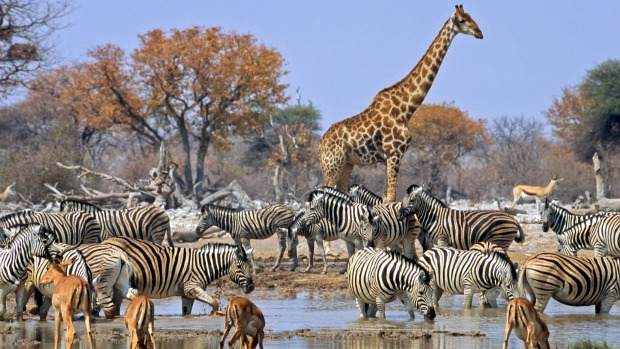
It came in the dead black of an African night, an ear-splitting roar just centimetres from my ear. I sat bolt upright in bed, every hair on my head bristling, every nerve ending suddenly on full alert for fight or flight.
For a moment, I couldn't think where I was. And then it happened again: a cross between a snarl and a bellow so loud, so near and so charged with menace, I couldn't fail to remember. I was in the African bush, in a tented villa, and only a wafer-thin piece of canvas sat between me and a pride of what sounded like very angry – and possibly hungry – lions.
I grabbed my torch, then thought better of switching it on. I didn't want to make any easier the task of unwrapping what could look, from the outside, rather too much like a packed lunch. Instead, I sat quietly in the dark, trembling, and willing my teeth not to chatter. Just the day before, driving around the private Ongava Game Reserve to the south of Etosha National Park, the premier wildlife-viewing area in the southern African country of Namibia, I'd been thrilled to chance on an extended family of lions, with two adorable cubs.
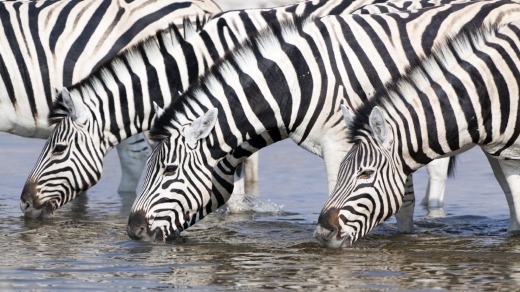
As I'd watched, the pair fed from their mother then ran a short distance away, before a few minutes later racing straight back to her side. Each time they became a little more daring, exploring further and further afield. Finally, the lioness picked up her babies, one at a time by the scruffs of their necks, and moved them well away from the male lion lying nearby, to continue their exploration.
That had been a delightful experience in the shade of mid-afternoon, from the safety of an elevated 4WD truck and in the company of an experienced guide. It felt less welcome that evening when, after dinner, I was only permitted to walk back from the lodge to my villa in the company of an armed escort, just in case the lions ventured into the camp. And now, at 2am, knowing that they have, and are busy sniffing me from just a metre or so away and prowling round and round my bed, it doesn't have anything like the same appeal.
The next morning, all six of us guests staying at the boutique Ongava Tented Camp turn up for breakfast looking more than a little worse for wear. We've each picked our way around the dozens of paw prints – including two sets of tiny ones – and neat piles of lion droppings all around the camp. "Did you hear them last night?" one woman asks the rest of us. "I felt sure one was going to tear right through the walls to get me …"
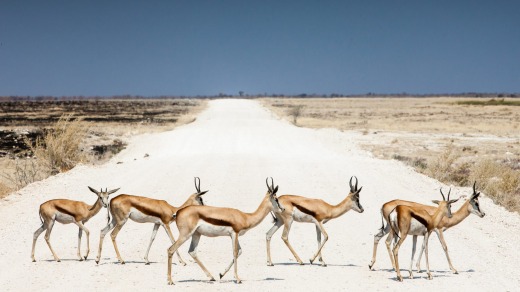
But, of course, they never do, the staff reassure us. As they would. The adult lions, they claim, are just keen to show the next generation around their kingdom – and the smorgasbord on offer.
Namibia is fast becoming one of the top destinations for holidaymakers interested in seeing African wildlife, with plenty of all the Big Five game: lions, elephants, buffalo, leopards and rhinos, both black and white.
While countries like Botswana and Zimbabwe have a much older and more established reputation for great game viewing, Namibia is now an excellent option. Its currency, for instance, is pegged to the weak South African rand, so it's often cheaper; it's safe (if you believe the staff at Ongava, that is), and is stable politically and economically. It also has a growing network of hotels, lodges and camps around the country, catering for different tastes and budgets.
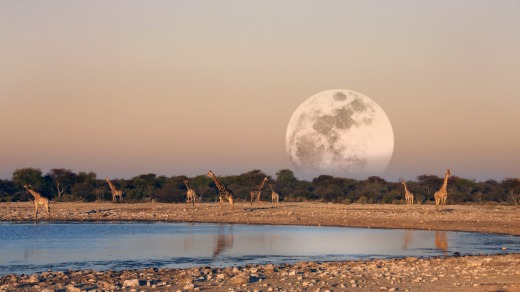
The wildlife is often quite distinctive, too. With much of the country, just north of South Africa, covered by desert, species have had to adapt to survive the parched environment. Many of the animals collect moisture in their nostrils from the sea fogs that drift inland to stay hydrated; their bodies have changed over the years to cope with the lack of water and the harsh climate.
For example, elephants here are leaner and taller than the regular African elephant. They're smaller in bulk, so they need less water, and have longer trunks for digging to find it. They've developed bigger feet to allow easier walking on the soft sand – pretty useful when you've been known to walk up to 200 kilometres to find fresh water.
Similarly, the endangered black rhino has a longer horn in Namibia than elsewhere to enable it to better forage for food, and it tends to be nocturnal to avoid the heat of the daytime sun. Meanwhile, oryx are so good at absorbing and preserving water, their urine actually leaves their bodies in pellets, while the African ground squirrel has adapted so well, it uses its tail to shield its head from the sun.
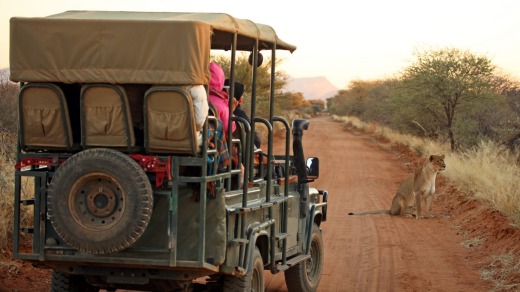
For birders, the country is a delight, too. It's home to more than 650 bird species, including the endemic dune lark, the chestnut-banded plover and the enigmatic white-tailed shrike. At the same time, there are no fewer than 258 reptile species, and Namibia is today regarded as having the richest variety of lizard in Africa.
The Namibian landscapes of sand dunes, vast empty sand and gravel plains, spectacular mountain ranges and pale dried riverbeds mean animals and birds often stand out starkly from their surroundings, which can make spotting them easier, viewing them far more rewarding.
Those surreal, almost lunar, landscapes are also bathed in the most incredible soft light, which is perfect for photography. Experts say the presence of tiny grains of sand in the air creates a fine mist which effectively tones down harsh hues.
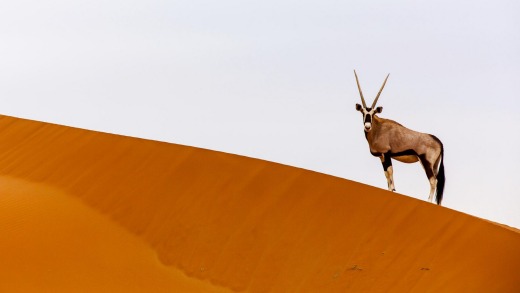
When I first arrive in Sossusvlei in the south-west of Namibia, the location of some of the world's highest sand dunes, every hillside seems to have a lone oryx – or gemsbok – its long horns towering majestically above it, standing on top. Every pathway has a herd of springboks leaping away from some imagined threat, each plain a bunch of staring ostrich, while shovel-snouted lizards and geckos shuffle busily up and down dunes.
There are plenty more animals besides, too: Cape fox, brown hyena and black-backed jackal. Some of the unique birds to be spotted among the dunes include dune lark, Ludwig's bustard and Burchell's courser.
Further north, inland from the Skeleton Coast, we see a herd of elephants scuffling around in the dry riverbed, leaving a trail of destruction behind them, where they've torn down bushes and rubbed themselves on trees, smashing the trunks and branches. In the midst of them all, two young males mock-fight for 10 minutes in a stirring lesson in malehood.
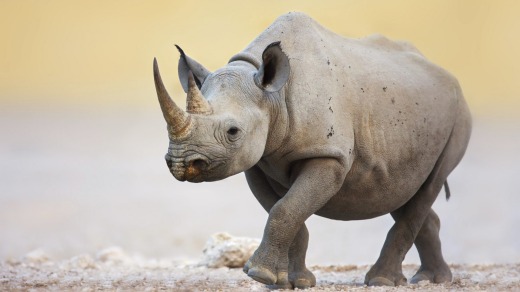
In another section of cracked earth along which a river once flowed, a group of five giraffes, with one young calf, munch thoughtfully at leaves from a tree before gracefully wandering off in strict formation.
Out on the coastline itself, massive colonies of seals bask on the rocks, dive off them, play in the water and fight on land. Carefully watching them are lone jackals, looking for an easy meal. Just offshore, there are great pods of dolphins jumping through the waves, while flamingos mince in shallow salt lakes nearby.
Different parts of the country have different fauna according to the terrain. Around Kunene to the north, on the river, there are crocodiles basking on the river banks, and wild donkeys and dogs appearing through clearings to drink. Then in the country's northern heart is its prize wildlife attraction, the Etosha National Park.
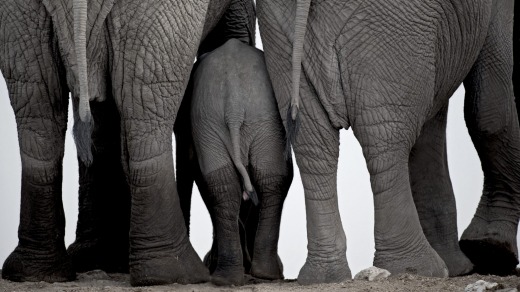
Around this park's waterholes, wildlife abounds, often arriving in waves of different species. Zebras stand and drink while oryxes studiously ignore them before both leave when the elephants arrive.
When the lions come down, however, there's almost a stampede to get away. And I know exactly how they feel.
1 Early morning just after sunrise and late afternoon are the best times to find animals.
2 During the hottest times of the day, it's good to visit the waterholes – as that's when the wildlife will be stopping by, too.
3 Make sure you bring binoculars, and a camera. It can be difficult to take photos on phones and tablets because the sun can make it hard to see the screen
4 Always ask if you can take a night drive to view the nocturnal animals, like rhinos, honey badgers and hyenas.
5 Never shout to attract the attention of animals. Keep quiet and still and be patient.
6 If a vehicle's stopped and its occupants are watching something hidden to you, pull over and ask them what they've seen. Don't necessarily believe them, though. One car driver said he was watching guineafowl; he didn't want his view of a leopard lying curled along a tree branch being obstructed by anyone else.
namibiatourism.com.na; classicsafaricompany.com.au
Fly to Namibia with South African Airways from Perth to Johannesburg, then connect to Windhoek. See flysaa.com/au.
The Classic Safari Company has a range of itineraries and accommodation options to suit different interests and budgets. See classicsafaricompany.com.au.
For wildlife spotting, Etosha is an absolute must, while the lions of Ongava make a habit of being close and personal.